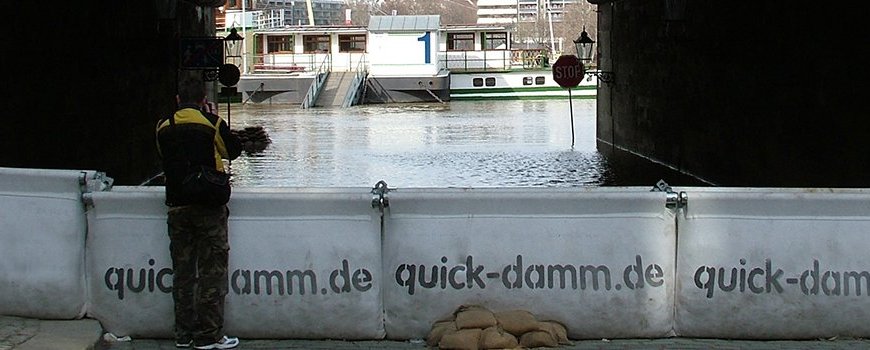The extent of the damage caused by a flood such as the Elbe flood of the year 2005 depends, among many other factors, on how private households have previously prepared themselves. A team of GFZ scientists from the section Hydrology has now for the first time examined the role of private precautionary measures within models for the estimation of flood damage.
Decision-makers at city and municipal level rely on models to decide where to invest in terms of flood prevention measures, to see where which measures are most effective. The factor of private precaution has so far been insufficiently taken into account in flood loss estimation models. First author Nivedita Sairam and colleagues of the working group on Flood Risk and Climate Adaptation, have taken a closer look at the factor private precaution in their study published in the journal Earth's Future.
The damage resulting from floods has become increasingly larger over the past decades. Causes are, above all, social factors such as an increasing standard of living and population growth: The more values are damaged or destroyed by a flood and the more humans are affected, the larger the extent of damage and the resulting costs. This must be taken into account in models for flood risk management if appropriate adaptation measures are to be identified.
For two flood events of 1993 and 1995 on the Meuse and Rhine rivers, the team showed that private precautionary measures can reduce the extent of damage to residential buildings by up to 50 percent. Measures of private precaution include, for example, waterproofing, securing oil tanks or boilers, or increasing the total ground floor level.
The scientists have determined the extent of private household losses and the type and extent of private precautionary measures by 948 telephone interviews with affected households in Germany for floods between 2002 and 2013, especially at the Elbe and Danube rivers. The team then reviewed how existing flood loss models are able to capture the effect of private measures.
Of four tested models, the BN-FLEMOps model - "Bayesian Network Flood Loss Estimation MOdel for the private sector" - developed by the research team has proved to be the most appropriate. Only two of the models tested were able to reproduce the effect of private precaution at all. BN-FLEMOps did so with the greatest agreement in comparison with the real determined effects.
Nivedita Sairam: "In order to get closer to reality and to better protect cities and communities from floods, future research on flood loss models should take greater account of the factor of private precautionary measures. For example, the use of data mining methods, which can analyse heterogenous data, such as the one we acquired via telephone interviews, can improve the models". (ak)
Original study: Sairam, N., Schröter, K., Lüdtke, S., Merz, B., Kreibich, H., 2019. Quantifying Flood Vulnerability Reduction via Private Precaution. Earth’s Future. DOI: 10.1029/2018EF000994








![[Translate to English:] Torsten Sachs in front of a climate station on a field](/fileadmin/_processed_/3/9/csm__TorstenSachs_bearbeitet_GS_4a1365ef84.jpeg)

![[Translate to English:] left image flood at the Ahrtal: image from above, several houses are flooded; left image:: Heidi Kreibich;](/fileadmin/_processed_/4/4/csm_Bild2_9af0130e9f.png)



![[Translate to English:] Start der Vega Rakete](/fileadmin/_processed_/6/4/csm_20231201-kachel_Vega-VV23-launch_ESA-CNES-Arianespace_706716b68c.jpeg)









![[Translate to English:] Poster exhibition at the Brandenburg Hydrogen Day at the GFZ, some participants in the foreground](/fileadmin/_processed_/6/5/csm_Erster_Brandenburgischer_Wasserstofftag_GFZ_402fcec95e.jpeg)
![[Translate to English:] Group picture of the participants](/fileadmin/_processed_/9/4/csm_20231108_CAWa-Workshop-Tashkent_Gruppenbild_99ea779d8a.jpeg)

![[Translate to English:] [Translate to English:] Hörsaal](/fileadmin/_processed_/e/6/csm_H%C3%B6rsal_e21ac645fb.jpeg)


![[Translate to English:] The Delegations in the Historic Library on the Telegrafenberg. In the back there are from left to right, the Dutch Ambassador for Germany, Ronald van Roeden, the Dutch Minister for Education, Culture and Science, Robbert Dijkgraaf and the scientific director of the GFZ, Susanne Buiter.](/fileadmin/_processed_/d/b/csm_Kachel-2_9eba4b4212.jpeg)

